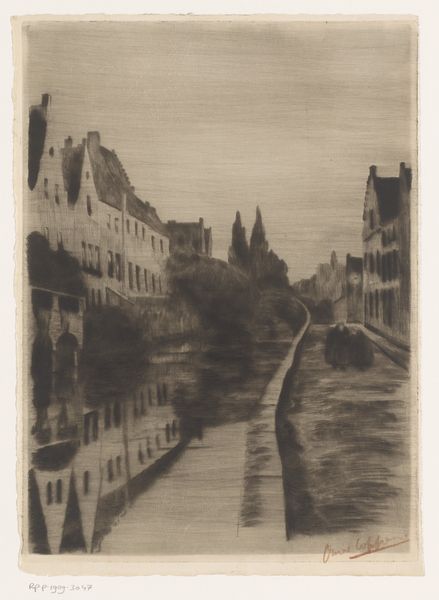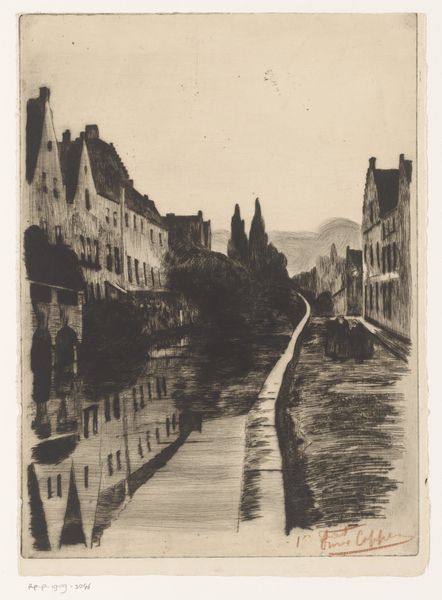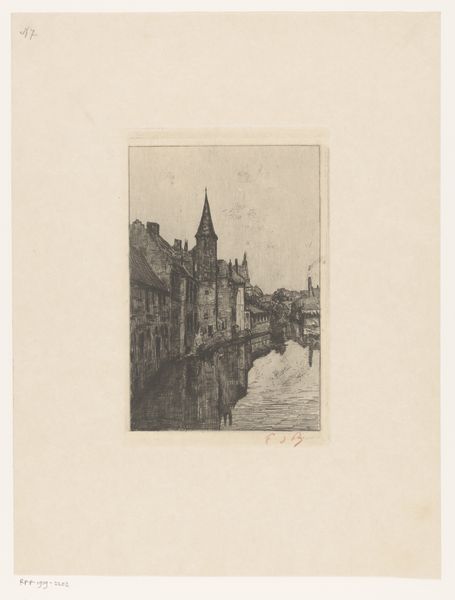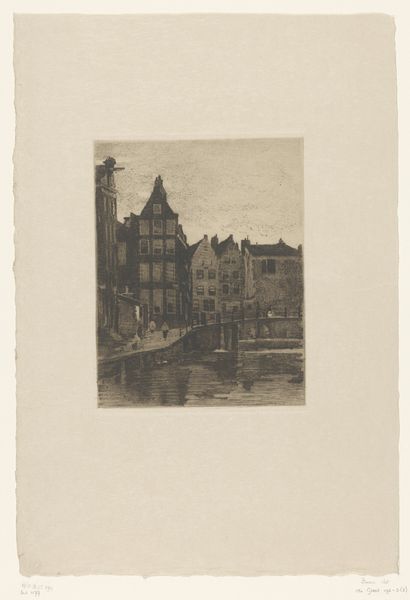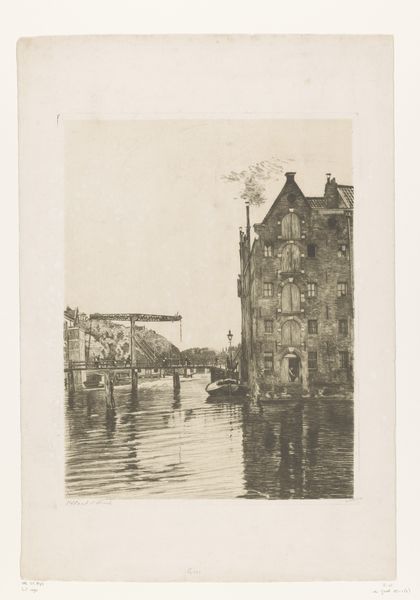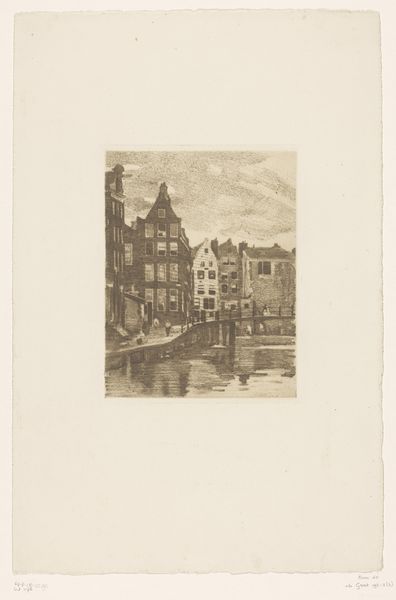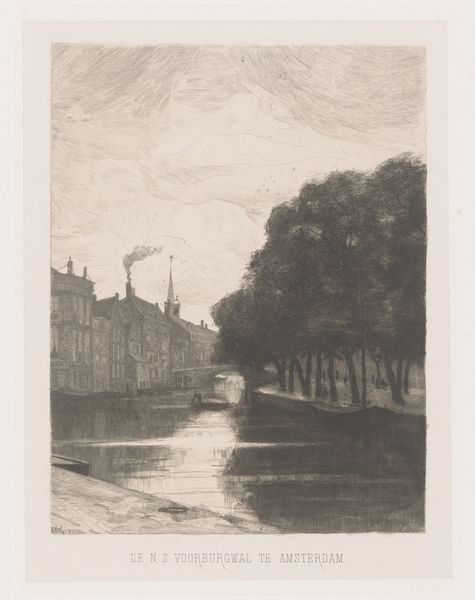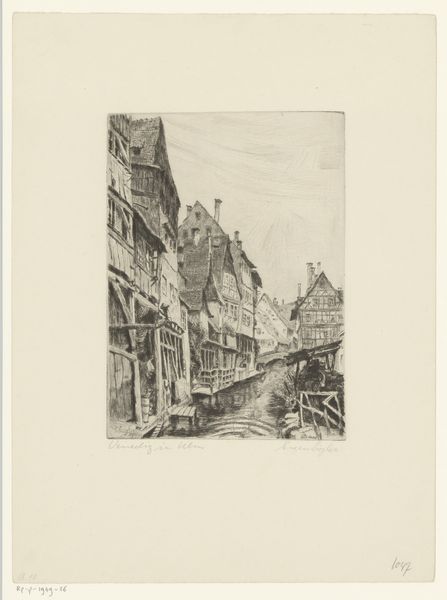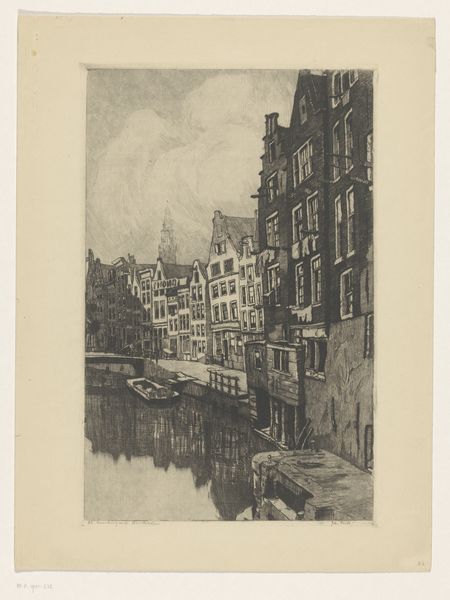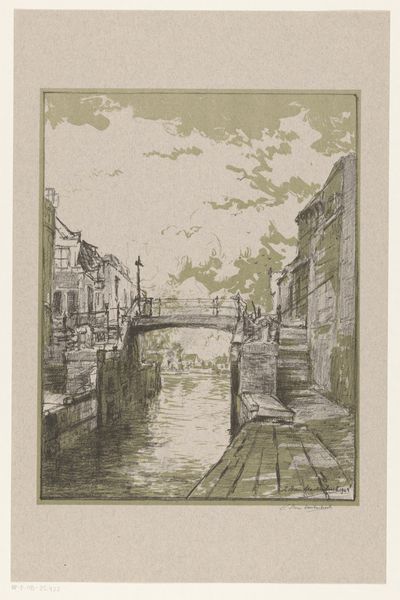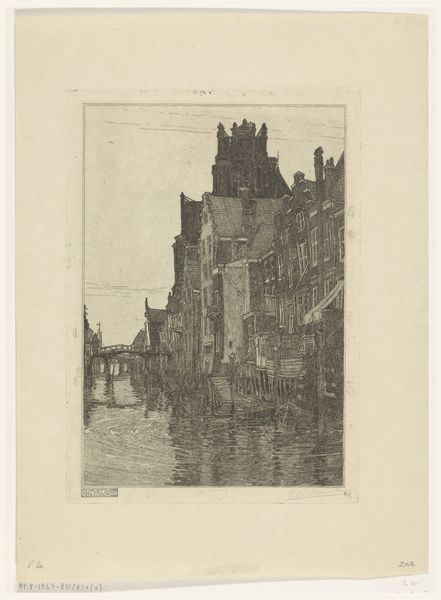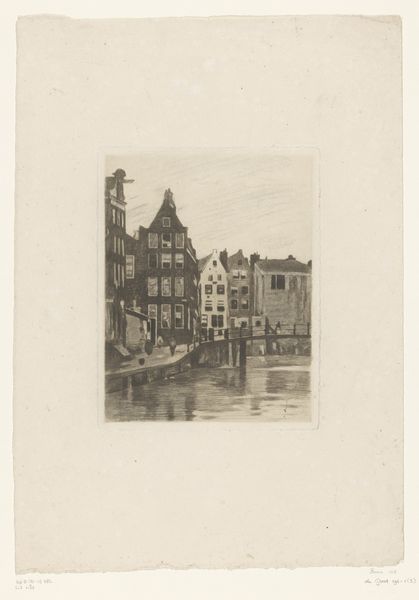
print, etching
# print
#
etching
#
symbolism
#
cityscape
#
street
#
realism
Dimensions: height 326 mm, width 240 mm
Copyright: Rijks Museum: Open Domain
Curator: "Two Figures Walking Along a City Canal," etched by Omer Coppens in 1896. A rather somber cityscape, wouldn’t you agree? Editor: Yes, it’s almost gothic. That constrained palette, the near-symmetry, the mirroring in the canal... it evokes a very particular mood. Melancholic and isolating, I’d say. But let’s unpack that melancholy through the etching process itself. What can we say about Coppens's use of the medium? Curator: Well, Coppens employs etching, a printmaking technique where acid corrodes the unprotected parts of a metal plate, to create this cityscape. The very act of etching—the time, labor, and materials—speaks volumes. You can feel the hand of the artist at work. Notice the precision of the lines; they're almost surgical in their detailing of the buildings and reflections. How does this medium serve Coppens’ larger themes? Editor: Exactly. The print form is key here. The reproducibility connects directly to its social context. Prints were made to circulate, and in this fin-de-siècle setting, this etching may critique or document the urban experience for different audiences. We need to examine it intersectionally. Who are these figures walking? Are they part of the bourgeoisie reflected in the buildings or something else? Is this intended as observation or critique? Curator: It's striking how he’s captured the specific architectural details along the canal—perhaps invoking the impact industrial advancements had on society. Think of the urban planning of that era, and the rise of the middle class. The materials employed point directly to these themes. What implications would these choices have for the labor of the artist? Editor: Absolutely, labor is also linked to artistic circles within 1890's Belgium. Examining the labor through gender is especially helpful because men generally monopolized this area; as such, any intersection of race, class, and gender makes art accessible. It begs us to ask how accessible was this landscape for disabled or transient bodies in Belgium at this time? Curator: Indeed, Coppens seems to be engaged with the material and social conditions of his time. Etching allows for a very accessible art form, something that would appeal to a wider audience. Editor: Agreed. Ultimately, by considering the print medium and possible societal context, we expand its viewing lens and interpretive opportunities for future exploration. Curator: Yes, looking closely at the printmaking process can really offer so many different narratives!
Comments
No comments
Be the first to comment and join the conversation on the ultimate creative platform.
